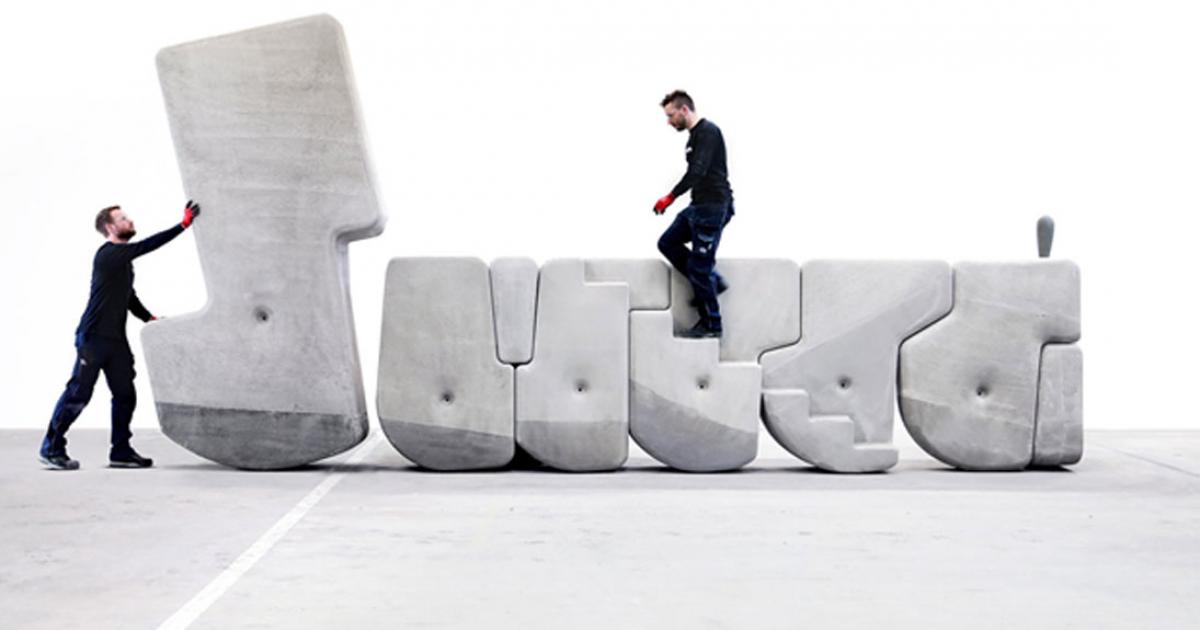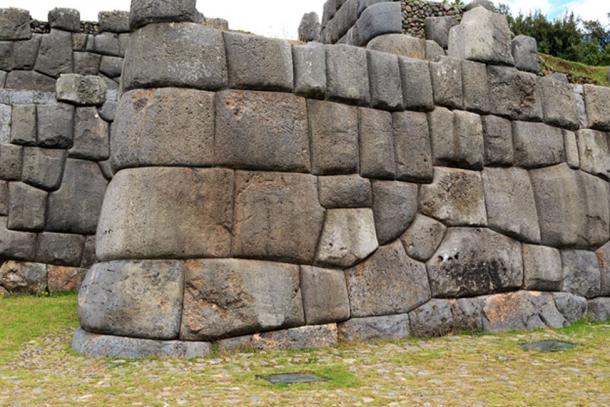
Is this How Ancient Megalithic Structures Were Made? MIT Scientist Move 25-Ton Blocks by Hand!
Ancient cultures in Peru, China and Egypt, to name only a few; quarried, lifted, transported and crafted vast megaliths, some weighing several hundred tons. Until now, theories as to how these stones were moved in prehistory have been abundant, but demonstrations in the field have been thin on the ground. However, a highly-creative experiment by a team of MIT researchers is now revealing our forebears as masters of gravity, balance and leverage.
The team of scientists released a video on Vimeo showing 25-ton cement blocks being pushed by two men effortlessly with one hand, and this is no internet stunt. On the contrary, the blocks can be pivoted, rocked, walked, tilted or rolled with almost no physical exertion required to achieve what a Gizmodo article rightfully referred to as “remarkable ease and precision.”
Walking Assembly from matter design on Vimeo.
The man behind the magic is Brandon Clifford, an assistant professor at MIT and co-founder of Matter Design, who together with building material specialist CEMEX, designed sets of over-sized concrete monolithic building blocks which interlinked to form lager structures. You might already have noticed how similar in style these cement blocks are to the massive boulders that were used to build Sacsayhuamán, the vast fortified citadel situated on the northern outskirts of the city of Cusco, Peru, the historic capital of the Inca Empire.

The enormous and heavy blocks that make up the walls of Sacsayhuamán in Peru, with incredible precision (Andreas Edelmann / Adobe Stock)
What Is the Science Behind The ‘Weightless’ Illusion?
There are several design dynamics at play here, which it has to be said, gives the MIT team infinite advantages over their ancient counterparts. For one, the scientists have total control over every microcosmic and macrocosmic aspect of their media - the blocks. The concrete masses are referred to by the scientists as “massive masonry units” (MMUs) and are made with “varying densities to allow precise control over where the object’s center of gravity ends up, adding stability and balance,” according to the Gizmodo article.

MIT scientists moving 25-ton blocks by hand. Credit: Brandon Clifford & Johanna Lobdell in collaboration with Davide Zampini—CEMEX Global R&D
While each MMU appears to have been randomly generated, the Matter Design website tell us that each one is carefully engineered with “strategically placed bevels, rounded edges, pivot points, handles, and interlocking features.”
On the other hand, ancient Peruvians transported their massive stones across vast distances in unpredictable outdoor conditions.


Some of the interlocking features used by the MiT scientists, and which have also been used by ancient builders. Credit: Brandon Clifford & Johanna Lobdell in collaboration with Davide Zampini—CEMEX Global R&D
The Future of Ancient Sciences
One of the main reasons this interesting experiment has come from ‘Matter Design’ is because they operate much in the same way that ancient cultures did. By this, I mean that the team is multi-disciplined with a wide-ranging skill set, and when focused on a common problem like ‘how do were move this hellishly-sized stone?’ mountains can almost be moved! Sort of, you know what I mean.
And just like on an ancient Andean farm or an Egyptian wheat field, where proto-scientists gauged environmental conditions while shamans and priests dealt with the gods, Matter Design is, in their own words, “a synthesis of art and science,” a design studio and a research lab. Collaborating with industrial partners, historians, music composers and visual artists they “identify ancient knowledge” and unearth “abandoned knowledge” that they claim resonates with topics of today.
This reawakening of ancient thinking processes is going to do more than add to our understanding of how the ancient world was built; these advances might also help in places prone to flooding as the nimble concrete walls could be assembled by local residents and services.
The technology may also have applications where the blocks could be used to quickly form impenetrable barricades within military situations, to defend from attack; just like the Incas used their interlocking stones 1500 years ago.
Top image: The design experiment created by MIT scientists Credit: Brandon Clifford & Johanna Lobdell in collaboration with Davide Zampini—CEMEX Global R&D
By Ashley Cowie
















Comments
The megalithic sites attributed to the Inca were allegedly built in the 15th Century... that is only 550-450 years ago. Why would you mislead people by saying 1500?
Disregard all the old stories and myths on how they were floated into place.
Monotomic superconductors
The pouch the Sumerians were depicted carrying held this powder of projection
Most those stones look melted and poured though.
Stones castings?
The blocks that were used in the megalithich structures in Peru and Bolivia are uneven in shape whereas those blocks being pushed and moved in the video have curvilinear bottom making it easier to move them.
Interesting idea, and easily testable. Find an ancient block from a failed megalithic wall and see if it is balanced in this way, and how easily it can be moved. Even if much of the conclusions that modern science has come to regarding our history are wrong (for reasons of social pressure), the scientific method is still valid, and no doubt those at MIT are familiar with it.
Interesting, but it really does not prove anything relative to how the ancients moved, fitted, and lifted the enormous stones. It’s yeah, OK, so what! It’s cute, but none too impressive to me.
Pages